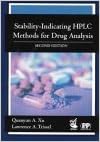Documentation for Stability Study
Stability study protocols and reports are essential components of assessing the quality and shelf life of pharmaceutical products. These documents outline the study design, methodology, data collection, analysis, and conclusions. Regulatory agencies require comprehensive and well-structured documentation to ensure transparency, accuracy, and reliability in stability testing. In this discussion, I’ll outline the key documentation required for stability study protocols and reports.
Stability Study Protocols
1. Study Purpose and Scope: Clearly state the objective of the study and the scope of the products and conditions being tested.
2. Study Design: Describe the study design, including test parameters, testing conditions (long-term, accelerated,
3. Sampling Plan: Detail the sampling plan, including the number and frequency of samples to be collected at various time points.
4. Analytical Methods: Specify the analytical methods to be used for testing stability attributes of the
product.5. Storage Conditions: Clearly define the storage conditions (temperature, humidity, light) for the study.
6. Stability-Indicating Methods: If applicable, explain how the analytical methods are stability-indicating and capable of detecting degradation products.
7. Data Analysis: Describe the statistical methods and data analysis techniques that will be applied to the collected data.
8. Acceptance Criteria: Define the acceptance criteria for various stability attributes based on regulatory guidelines.
9. Study Timeline: Provide a timeline indicating when stability samples will be taken and when the study will be completed.
Stability Study Reports
1. Introduction: Provide an overview of the study, its objectives, and a brief summary of the methodology.
2. Materials and Methods: Detail the experimental setup, including product information, sample collection, storage conditions, and analytical methods.
3. Results: Present the raw data collected during the study, including stability attributes at different time points.
4. Data Analysis: Analyze the data, including trends, degradation patterns, and statistical analysis results.
5. Discussion: Interpret the results, discuss any deviations from expected behavior, and relate findings to the product’s quality and stability.
6. Conclusions: Summarize the study’s findings and their implications for the product’s stability over time.
7. Recommendations: Provide any recommendations for adjustments to storage conditions, packaging, or further testing.
8. Reference to Protocol: Refer to the stability study protocol and confirm if the study was conducted as per the approved protocol.
9. Data Appendices: Include graphical representations, tables, and other data visualization aids to support your findings.
Regulatory Considerations
1. Regulatory Compliance: Ensure that stability study protocols and reports adhere to relevant regulatory guidelines and requirements.
2. Transparency: Maintain transparency by accurately reporting deviations, challenges, and limitations encountered during the study.
Archiving and Traceability
1. Archival: Maintain proper documentation archival practices to ensure long-term traceability and accessibility.
2. Audit Trail: Maintain an audit trail that documents any changes or revisions made to the stability study protocols or reports.
Conclusion
Documentation for stability study protocols and reports is vital for ensuring the quality and integrity of pharmaceutical products. By providing clear, comprehensive, and accurate information about study design, methodology, results, and conclusions, manufacturers can demonstrate product stability, regulatory compliance, and commitment to patient safety.
